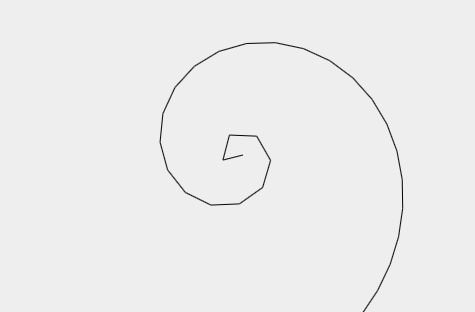If we want to be able to control our step value, we can multiply it by a scalar ($a\cdot k$) before taking the logarithm, like so:
$\theta=\frac{\ln (ak\cdot r)}{a}$
Therefore, if we take the natural log of our theta multiplied by the scalar and $a$, then divide itthe whole thing by $a$ before plugging it in to the equation, we will get equally stepped vertices on the logarithmic spiral. Image:
I generated this with some JavaScript code, which you can find in this JSFiddleJSFiddle.)
You can also try it out interactively on DesmosDesmos.
This is because we are sampling the curve in increments that cause equal lengths along the curve, not equal lengths between consecutive points. As the spiral gets bigger and bigger, the curve will get shallower and shallower, so the distances will get closer and closer to each other.
